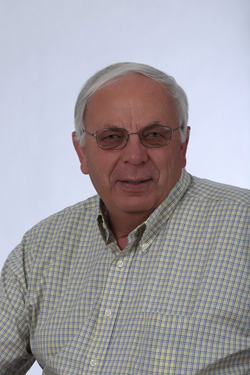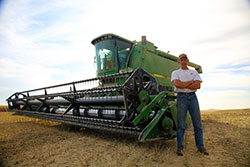|

Click on above image to see and here Guy Swanson
and Burt Bock at the Ada, Ohio Seminar.
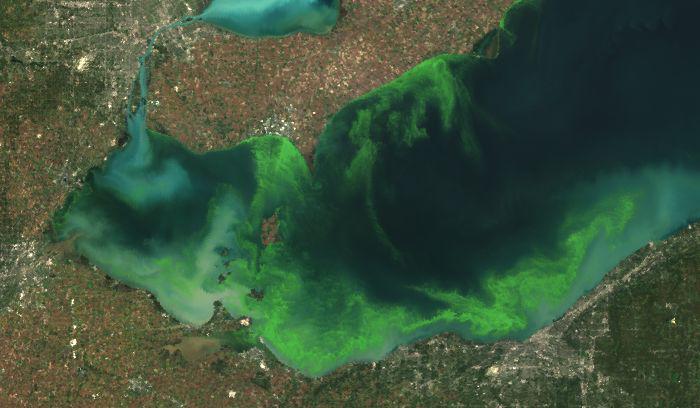
1.
Lake Erie and The Palouse Clean Up.
The Roots of No-tillage and Fertilizer

2.

3.
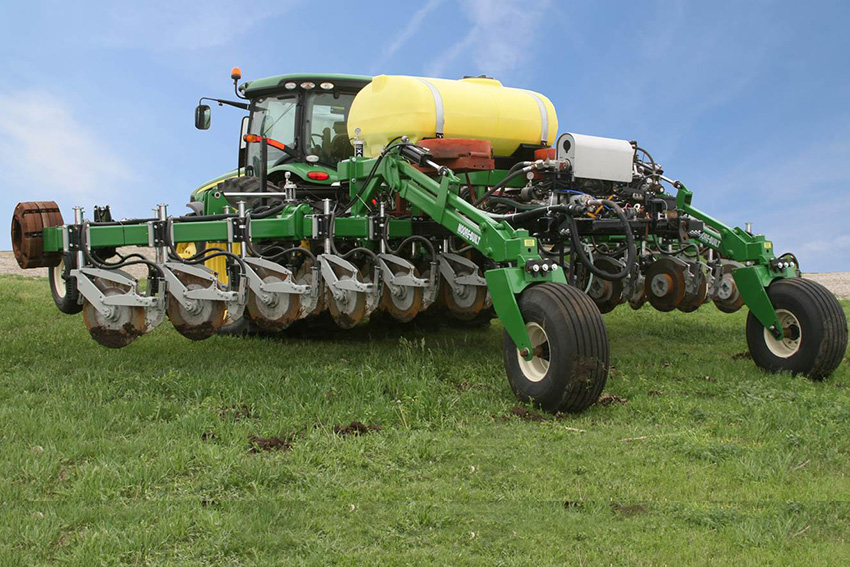
4.
Click Here,
Gangwish Seed Farm, Shelton, NE. Mustang Tool Bar on 15 inch by 30
feet.
https://vimeo.com/bandbvideo/review/162609745/b8a4c47ab2

5.
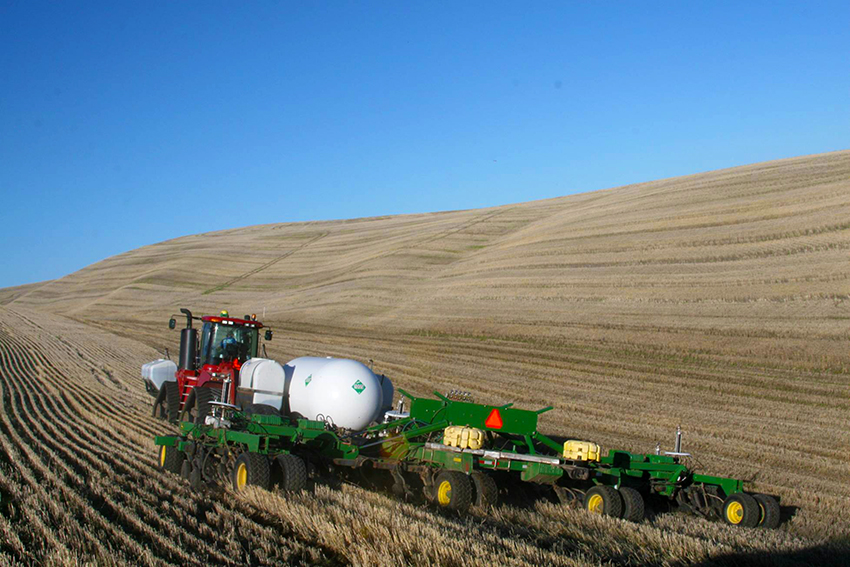
6.

7.
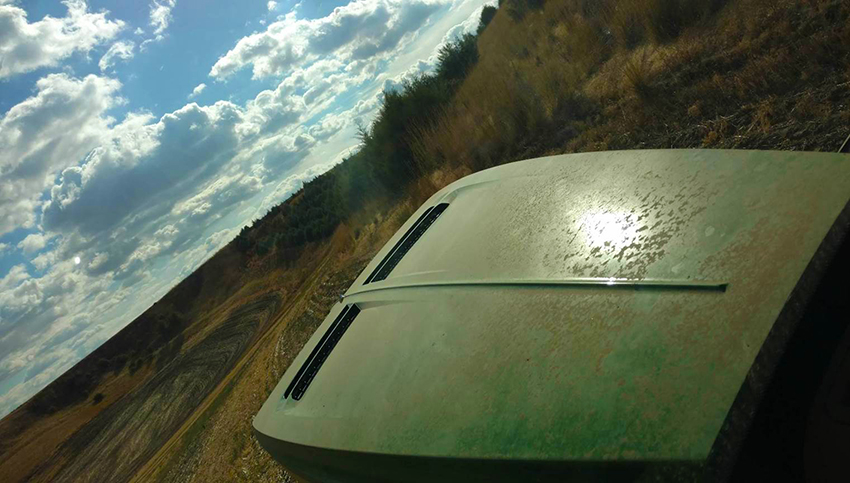
8.

9.

10.

11.

12.
The
lava flows from the Dike Fissures are shown in this Snake River
Canyon view. Multiple layers of Basalt can be counted.
Dike Fissures are formed as large cracks in the earth’s mantle that
allows molten lava to flow out to the surface and flow up to 100
miles.
On
top of these basalt flows that had cooled came the current
geological event.
The explosions of the Strato-Volcanoes delivering ash and turning
building the Palouse Wheatland Soils.
Professor Nick Zenter, CWU.
Lower
Granite Dam provides navigation to Lewiston, Idaho. More dams are
planned but when?
·
True Story, “Going 900 miles and climbing up 6,547 feet and we are
in our Idaho home”.
·
Sockeye salmon heading home discover that number 8, Lower Granite
Dam is the last dam.
·
At 752 feet above sea level, this is about half way after climbing
and jumping ladders over 7 Columbia and Snake River Dams.
·
Lower Monumental is about half way to Redfish Lake (6,547 ft) in
Idaho Sawtooth Range of the winter paradise
Sun Valley, Idaho.

13.
Winter
moisture can be stored in the snow pack at elevations of 1,500 feet
to 13,500 feet. At elevations below 3,500 feet to 1,500
feet,
the snow
pack slowly perks into the soil.
High quality white pine forests grow well with the volcanic ash.
The primordial forests are removed with logging railroads and river
log drives to move the timber in the spring runoff.
Has the problem been Identified?
How are the two regions
similar?
Who
has the money to help?
-
No-tillage is required to implement Rotational Band Loading to
improve phosphate efficiency, along with NPKS, Micros.
-
Avoid
the surface run off, concentrate the nutrients into bands. NPKS
plus micros, Hide the fertilizer, Fertilizer Placement deep banded
to 7 to 8 inch depths without tillage.
-
Always,
Adjust soil pH to 6.8 to 7.4, requiring less fertilizer to be
placed deep.
-
Add one
additional deep rooted crop.
-
Consider more intense cover cropping.

14.
Stopping Tillage Is Critical,
Protect the Resource,
Producers Must Overcome
Gravity.
Making
Money All The Way.

15.
1968 The last moldboard plow tillage event. Plowing in Anhydrous
Ammonia was a fall event.
In the Big Inning.
Fall of 1973 was the first 160 acre start in low yielding
conventional standing spring wheat stubble with a double disc drill
IH# 510 and a shank ammonia applicator in low residue.
“Old
Yeller” No-tillage gets it start in October of 1974 with 9 inch
spacing.

16.
Steptoe
Butte, “Old Yeller” and a Jimmypillar D6, 4R-035, introduce farmers
of Eastern Washington to No-till
October of 1974.
Lyle
Nagle, a weed warrior at WSU, and a long term friend coaches Mort
about two materials, sulfasate and glyphosate…these are numbered
materials…one of which is to become Roundup.
Mort goes to Hawaii and meets Frank Lessiter that fall. Wheatland
enthusiasm improves with the Russian wheat grab. Guy says in the
August of 1974 “The dead line is too tight, I cannot get the heat
treated Pohl springs built in time, lets apply opener ride control
with hydraulic cylinders with an adjustable bypass.”
Mort famous saying arrives, “Son, Everything has got to roll. If you
cannot buy it, you have got to build it”

17.
1975 to
1977, The next few years went by with 8 more advanced thinking
farmers. These farmers in their 40’s and 50’s have a vision with a
Comfort King Drill and going No-till from 1974 to 1978.
Farmers
like Koenig, Druffel, Cochran, Miller, Stueckle, Johnson, Brown,
Arland, Schulthies and Seal.
WSU builds the USDA II drill with Morts opener design. Verlan
Cochran discovers that this opener works well.
Hydraulic cylinders apply down pressure to the openers.
Some producers own 2 of the Comfort King drills. The 12 foot 9 inch
spacing has 17 heavy duty framed openers on 9 inch centers.

18.
In 1975 to
1977, A Comfort King Drill is a copy of “Old Yeller” to a certain
degree.
A 3 box
design, 8,000 lbs. of Ammonium Nitrate is being loaded in the front
box. 34-0-0 is surface applied at 300 lbs. per acre of AN. The meter
is a Barber screw.
The center box is for seed with Double Runs from John Deere, 66
bushel of seed. 3,960 lbs. of Certified winter wheat seed.
The 3rd
box or the back box has a Barber screw and is for starter seed row
ammonium phosphate sulfate or 16-20-0-14S. 3,600 lbs. of starter dry
fertilizer.
The machine weighed 12,000 to 14,000 lbs. empty and doubled its
weight when loaded.
The machines were considered monsters of the Palouse, the
Caterpillar tractors D6, D-5, D6C and D-6C-LGP handled the machine
with positive tongue load.
The Mort
Swanson, Offset Leading Double Disc opener coulter blades metered
the seed as it was released into the soil slot.
The opener design was and still is, very big deal as the leading
blade was able to cut like a plow coulter and seed at high speed
with perfect seed release to the bottom of the row.
The ¼ inch
double edged, salt quench, high quality carbon blades were 28 inch
in diameter.
Timken bearing kits were developed to replace the ball bearing hubs
of the initial run.
The steep slopes required Timken bearings like the original “Old
Yeller”.

19.
At Col.,
Washington, 1975, A winter wheat on winter planting. Top dressed
with Ammonium Nitrate.
A Col.,
Washington, Remember the 1973 start of No-till was Winter Wheat on
Spring Wheat, In low residue with Fertilizer placement of Anhydrous
Ammonia.
The John
Deere moldboard plow helped invent this machine.
-
Plow
coulters at 22 inch diameter were offset and conjoined in
compound angles supported by outside supporting members.
-
A very
steep and compounded angle allowed superior penetration
-
A
special seed tube made seed metering possible with the blades.
-
This was
a practical and simplistic and time proven component design.
A leap of
faith.
Many fertilizer dealers and certain plowboys thought Mort had lost
his marbles in the divorce.
Guy knew he was always true and right to the cause.
It was a
wake up moment for scientists at WSU, ARS, U of I and Oregon State.
These WW2 vets were not going to take no for an answer. No-till was
going to work.
“We are in the business saving soil every year and making top
yields every year”.
From 1978
to 1980 the needs change.
Machinery and Chemicals improve to allow for more No-till efficiency
and highest yields.

20.
Surface
application of commercial fertilizer comes to an end.
Yields go
way up and weed control becomes much easier.
Soil loss actually becomes a soil increase in 1980 as No-till wins
broad scale approval with Yielder Drills.
All fertilizer types including Anhydrous Ammonia can be applied
No-till.

21.
Let’s look
at the problem and how it was solved.
1.
Plant Breeding re-focused on No-tillage. Better rotations were
developed.
2. No-tillage Machinery was correctly developed to deep band
all nutrients at time of seeding.
3. The crops remained Non-GMO for export and direct human
consumption.
4. The Fertilizer type was readjusted and greatly improved with
uniformity.
Did the
Federal Government Need Help? The University System needed help from
the Federal Government.

22.
A No-till
Rotational Grid in 14 different crops. Spring Canola, Argentine and
Polish going reproductive.

23.
Plant
Breeders hold the key, is there a better crop?Jack
Brown, University of Idaho, Spring and Winter Canola, Winter
Rapeseed and Mustard Breeding Program.

24.
Raising a better crop with deep roots and fumigation
qualities. The plant breeders finally
develop a viable Hybrid Winter Canola replacing Dwarf Essex.
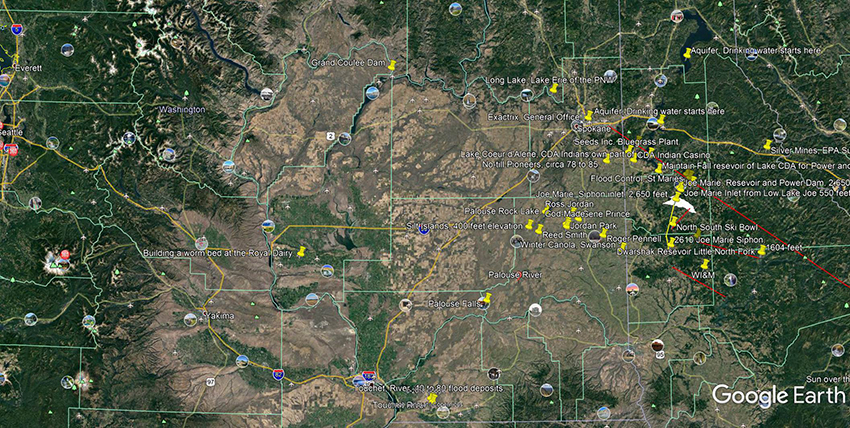
25.
Washington
State’s wealthy agriculture production area is driven by the Gravity
of volcanism, wind, fire, snow, ice, and water.
Wind blow
loess soils provide deep soil depths.
Ice
provides the Great Missoula Floods.
Lava flows
provide the base rock from the Dike Fissures or cracks in the
earth’s mantle.
Volcanoes
are able to deliver ash from Northern California to British Columbia
from 15 identifiable Strato Volcanoes.
The
Columbian and Snake Rivers provide more than enough water to
irrigate and make power.
Winter
moisture can be stored in the snow pack at elevations of 1,500 feet
to 13,500 feet. At elevations below 3,500 feet to 1,500 the snow
pack slowly perks into the soil.
High
quality white pine forests grow well with the volcanic ash.
The primordial forests are removed with logging railroads and river
log drives to move the timber in the spring runoff.
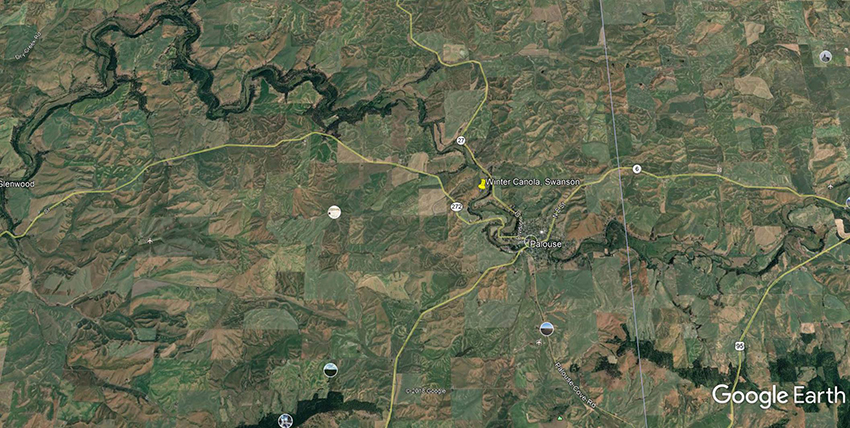
26.
The
original lay of the land was tall grassland
( Big Blue Stem and Bunch Grass) across the Palouse with an
intermingle of timber in moist areas at rainfall patterns above 14
inches to 25 inches annually.
Above 25
inches of annual rainfall the elevation 2,750 feet the flora
changed and became primarily timber. The Dike Fissure Lava Flows
obviously provided an ideal landscaper for Volcanic ash to overlay
the hard rock.
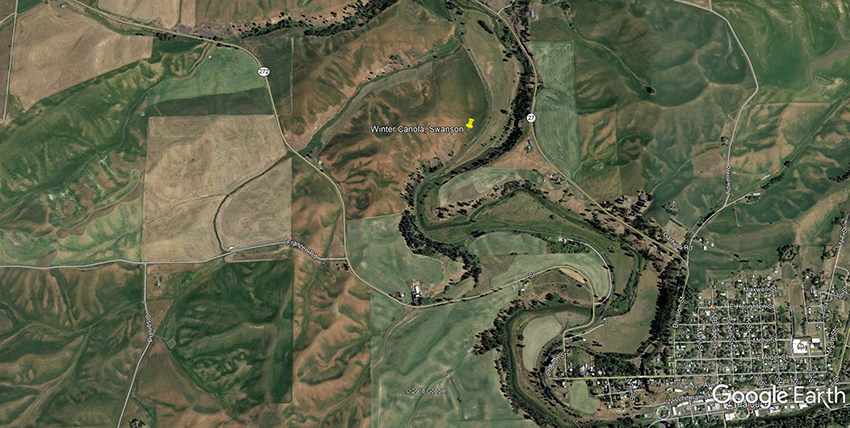
27.
Along the
Palouse River Canyon. Facing south and east
at 2,415 ft. elev. A No-tillage farm since 1974, 400 acres, Granny’s
Pad.
No-tillage
Winter Rape, established on Chemical Fallow, Fall Sprayed, Well
established with water injection and allowing a November application
with PPG-Chemhoe-135 FL. ( IPC and Sevin or Propham and Sevin.)
A total
cleanup of grassy weeds for the years of No-tillage top dressed
nitrate with “Old Yeller”.
Circa
July, 1984, Harvest of Dwarf Essex, Winter Rapeseed, under contract
with George F Brocke and Sons, Yields in the 110 to 120 bushel range
at 50 lbs. per bushel.
Deep band
placement of nutrients between seed rows. Seeded in July, 1983 with
a Yielder 5/15 inch Paired row Spacing Drill,
2015-001. Water Injection in July 1983 Seeding at 150
gallons per acre.

28.
July,
1984, Palouse River Canyon, Washington State. Dwarf Essex, Winter
Rapeseed.
Along the
Palouse River, In sight of the western Slope of the Rocky Mountains
is a community of 1,100 people. This is Palouse, Washington.
July 1984.
The
resource of the area, Grain Farming, Timber, Education and large
machinery for mining, defense and canal construction, RA Hanson Co
which was started in the Palouse Hills building combine leveling
equipment.
The
Palouse River canyon has basalt cliffs that were developed from
Flood Lava Flows forming up basalt beds traveling
hundreds of miles from Dike Fissures in the earth’s
mantle.
The
underlying rock geology from 1 to 2 miles deep comes from
Flood Basalts laying over older granitic mountains. The 100
feet to 150 feet deep overlay of volcanic ash comes from the Cascade
Range, The Cascade Strato Volcanoes which made a
delivery of volcanic ash hundreds of times, with the latest delivery
being 2 inches of gray volcanic ash in May of 1980. The soil is
arranged in array of folds and drifts of volcanic ash in varying
depths. The soils store winter moisture.
The story
is further explained by geologist as the “Palouse Problem”. Yet
today the Palouse Country is home to two Land
Grant Universities that are still trying to figure it
out.

29.
The area
is known for very steep 45% to 65% compound angle slopes.
Specialized planting and harvesting equipment is needed.
The Palouse is the home of the first true No-tillage top dress and
deep fertilizer placement No-till drills.
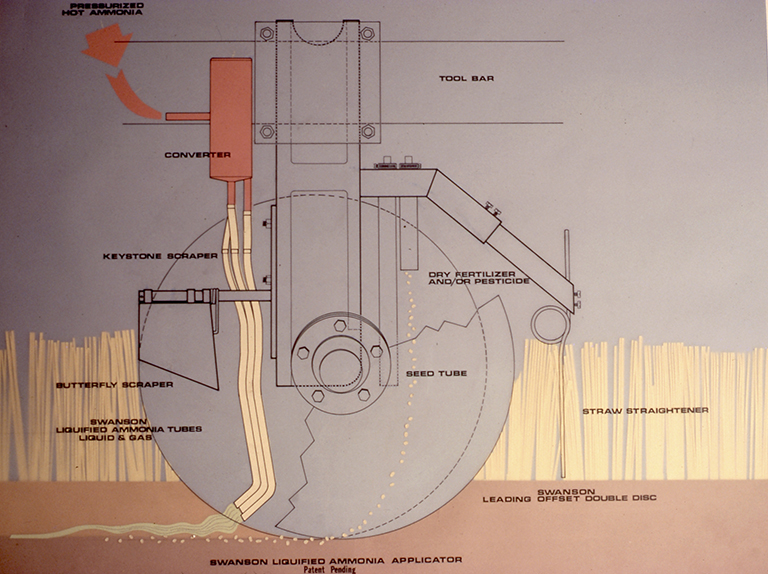
30.
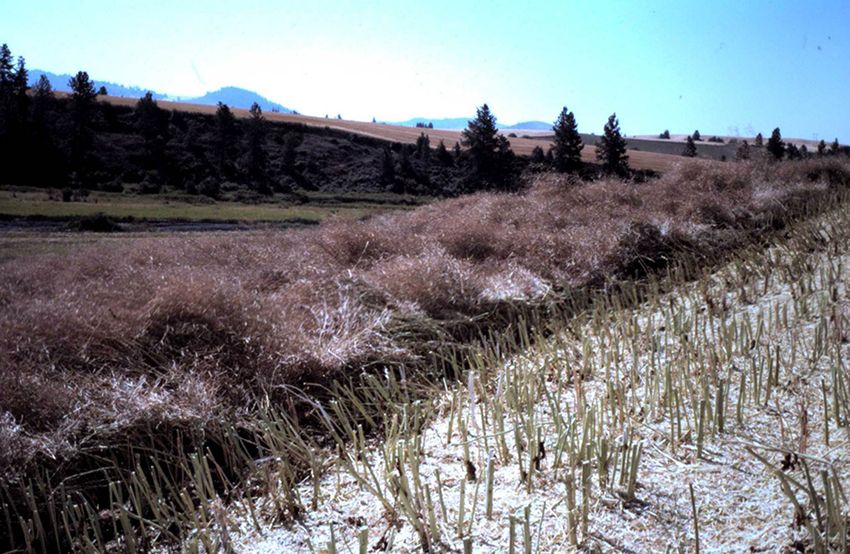
31.
Great
residue loaded with soil fumigating Glucosinolates from stems leaves
and pods of Winter Rapeseed covering the soil. This Palouse Valley
is one of the most polluted mountain rivers of Idaho and Washington,
in fact the nation.
A painful
story of the loss of soil resource due to the
availability of commercial fertilizer.
Tremendous
soil loss by removing livestock and alfalfa from the land in the
50’s and using very low residue tillage and plowing for NH3
application. The Timber and Forest management also allowed stump
farms and lack of riparian protection.
By the
1970’s the Snake River and Columbia River dams were
the water resources that were under scrutiny. Dam construction was
regulated to an end game. A new dam would take an act of Congress.

32.
So much soil was moving off the land and into the water that the
dams reservoirs and navigation were at risk. Power generation for
Aluminum Industry was questionable.
In fact one new dam (1973), the 717 foot tall, Dworshak Dam was
never finalized. The final assembly of turbines 4, 5 and 6 were
never completed. Thus 220 MW of peaking power was designed in but
not used due to fish.
Every hour the dam gives $6,160 back to the fisherman of the
Clearwater and Snake Rivers. That makes the fish pretty expensive.
Obviously a chairlift ticket at $100 per day is a lot better deal.
By 1970 “Manifest Destiny” had come to end. The Resource was
considered to be at risk. Fish had now become the priority with
clean, and optimum fish cooling, 46 degree water.
The Dworshak Dam in 1973 had a facelift and to promote fishing of
migratory Steelhead and Salmon.

33.
In the late 1950 ‘s and 1960’s, Before No-tillage and
strict management of the water shed the soil erosion was up to 200
tons per acre.
All the tillable acres were fall plowed 50% to 100% of the time in
the 60’s and 70’s to allow for NH3 fertilizer banding and
application equipment.
The Palouse River phosphate level was 200 times above the national
maximum. Something had to be done with the water quality and the
runoff into the Snake River.

34.
Mort
Swanson, Pioneer No-till Farmer,
with an MH
hillside gleaner combine cutting his first Big Crop of Dwarf Essex,
Winter Rape Seed. The Dwarf Essex grew to a very tall height of 84
to 90 inches.

35.
Harvesting
without swathing, Reel up to the maximum height, End Cut, Rotary
sickles came with the next crop.
More news about improved headers and reducing header loss in 2018 is
coming.
https://www.country-guide.ca/2016/04/21/shatter-losses-in-straight-cut-canola/48882/

36.

37.
A Row
Spacing Leveraged Fertility Change.
By 1980
Fertilizer Placement arrived. Banding fertilizer with double disc
openers between rows hides the fertilizer from the weeds.
Feed the
growing crop with leveraged fertility and starve the weeds.
Yielder Drills with high capacity allowed Dwarf Essex Winter Rape to
seeded with Water Injection.
Paired Row Seedings on 5/15 inch or average 10 inch
allowed water to be injected in the seed row to establish Dwarf
Essex.
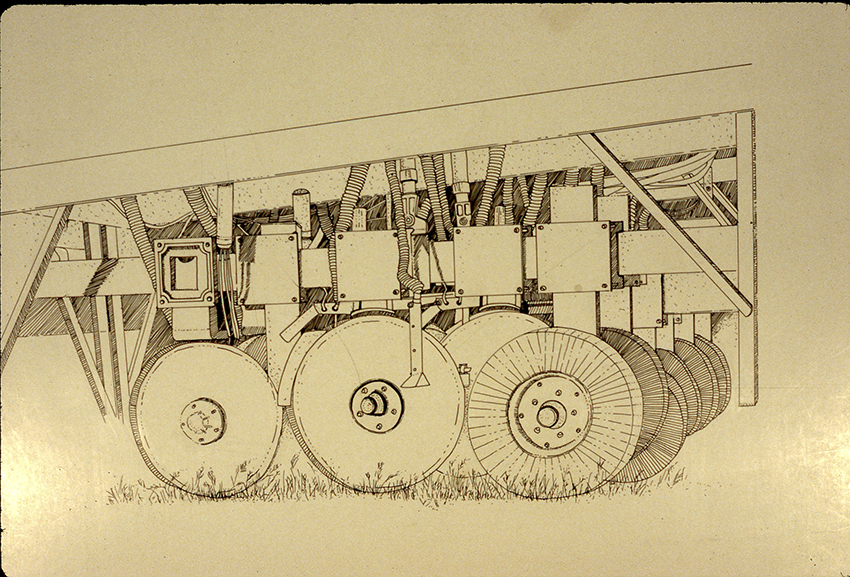
38.
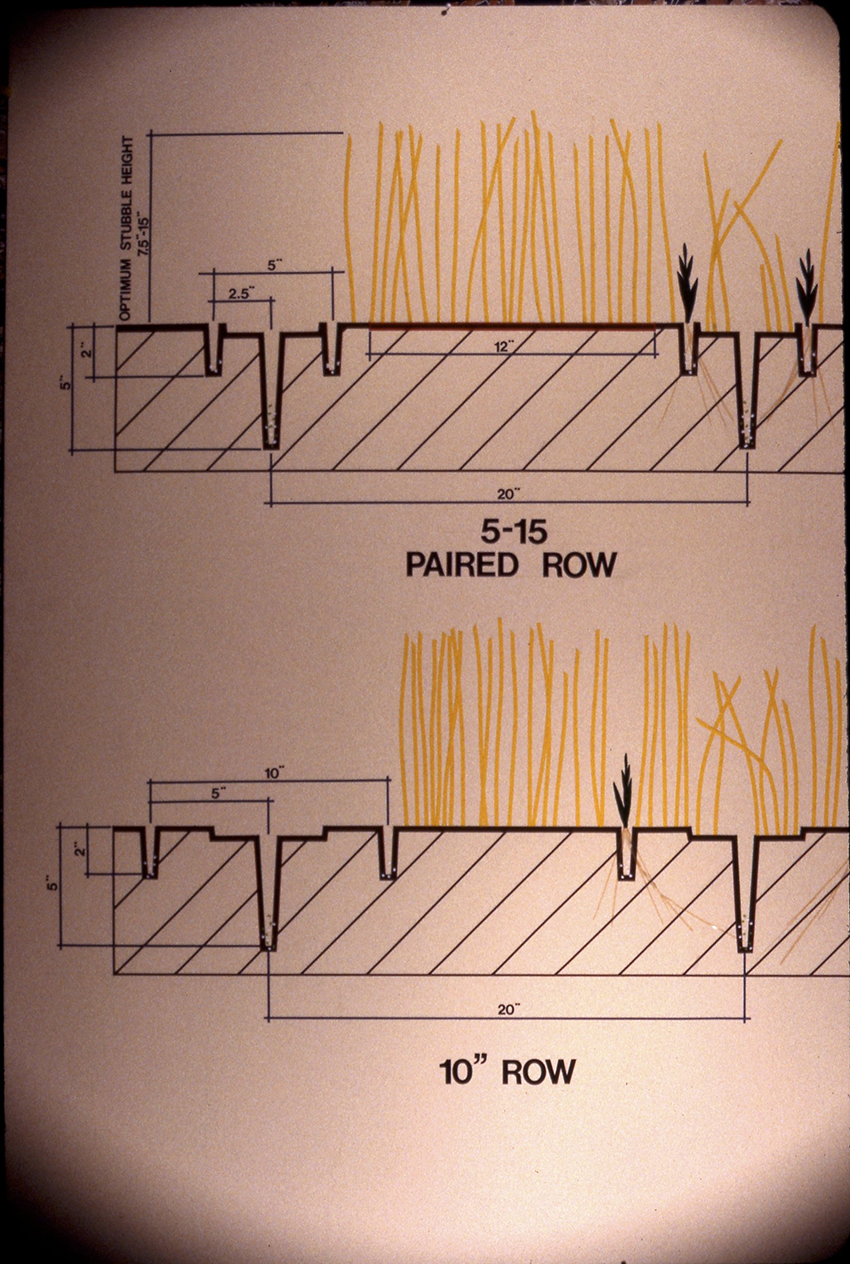
39.
Good
sprayers that could spray with slippery underfoot in freezing
conditions, late in the fall with on-coming snow storms.
The tracked
sprayer allowed PPG-135 Chemhoe to control weeds in Winter Rapeseed,
Dwarf Essex.
Farming is a lot of fun when your leader is a WW2 B-29 navigator.
All things are possible.

40.
Good
sprayers that could spray with slippery underfoot in freezing
conditions, late in the fall with on-coming snow storms

41.

42.
The
tracked sprayer allowed PPG-135 Chemhoe to control weeds in Winter
Rapeseed, Dwarf Essex.
Farming is a lot of fun when your leader is a WW2 B-29 navigator.
All things are possible.
The Right Tool
For No-Tillage Deep Banding of Nutrients. 2018.

43.

44.

45.

46.
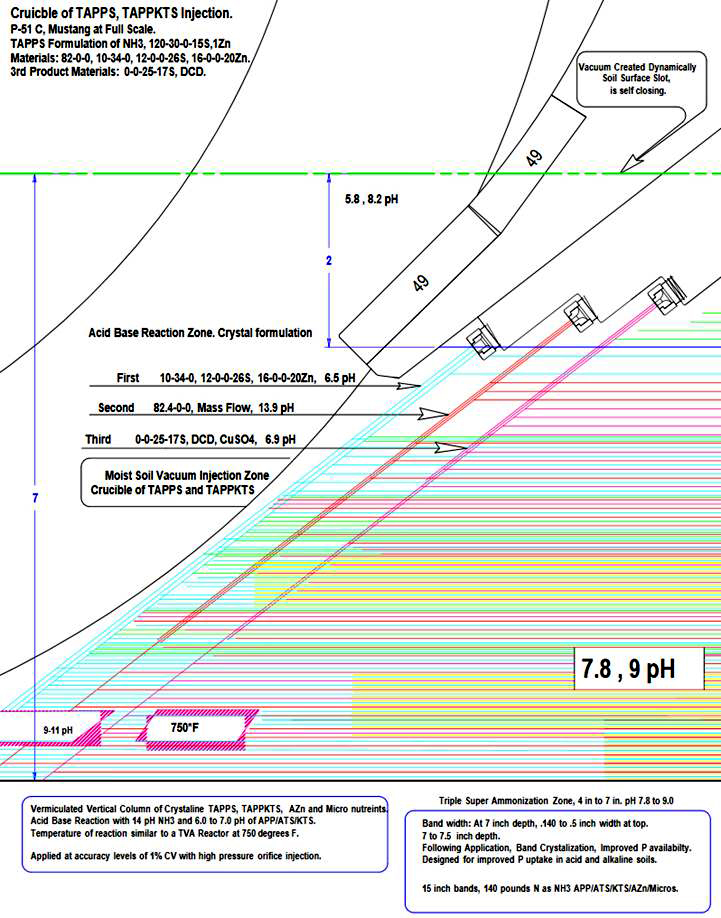
47.
Vermiculation
of NH3, Poly Phosphate and Thio-sul® Is Powerful, Immediately
Crop Available.
Highest Known Uniformity at 1% CV with Homogenous Micro Nutrients.

48.
Crystals of
TAPPS and TAPPKTS.

49.
Click on image for the PDF File
A unique and
discrete advantage of No-tillage.
Rotational Band Loading Improves nutrient uptake in future crops.
Continuous No-tillage In Kansas Conditions.
Higher Production At Lowest Cost per Bushel Produced.
Anhydrous and Snow Go Together, Hand and Glove In The Snow Trap.

50.

51.

52.

53.
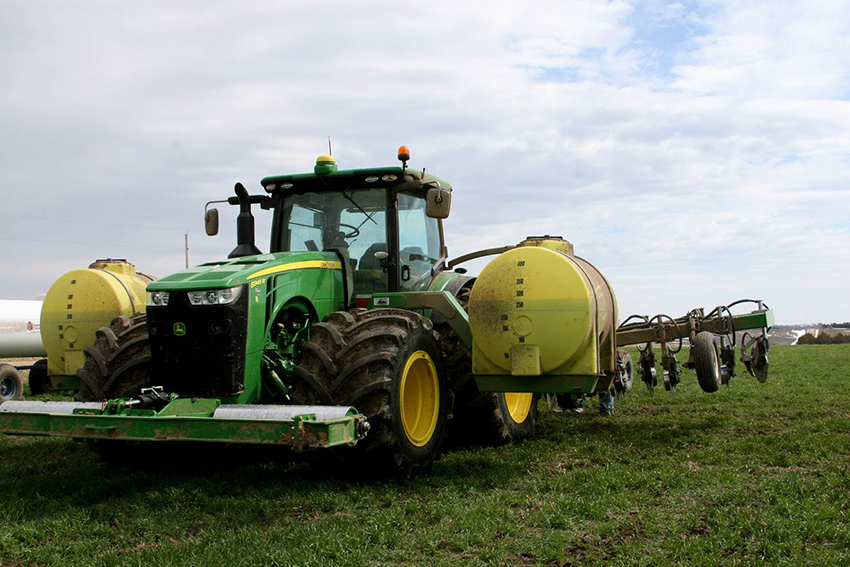
54.
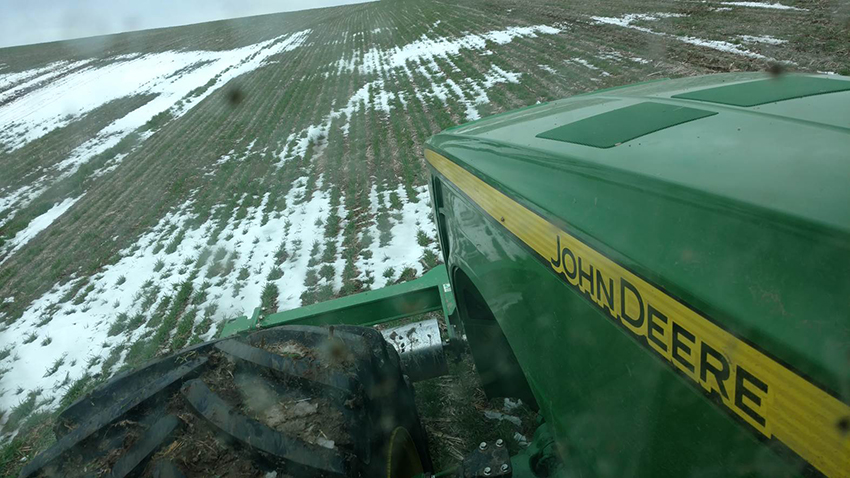
55.
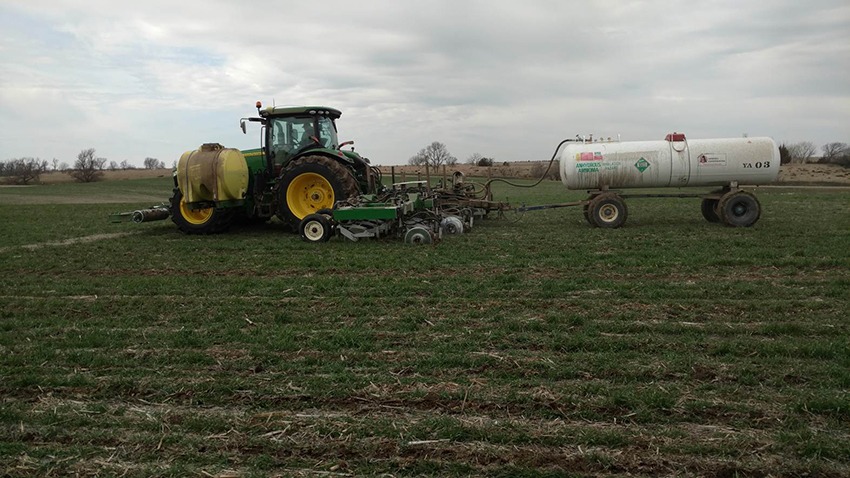
56.

57.

58.

59.

60.
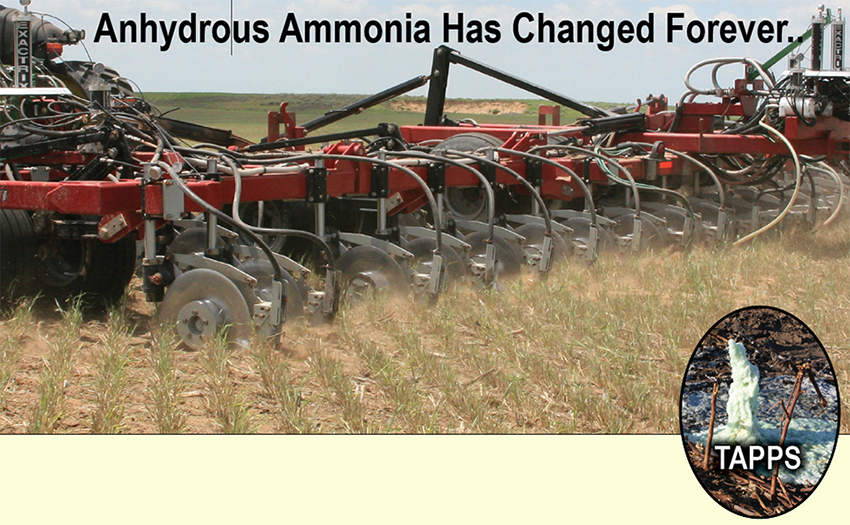
61.
After 70 plus years of shank tillage application,
NH3 is finally a true No-tillage material at depths to 7.5 inches
at speeds to 12.5 mph.
The Exactrix 1% CV injection process makes TAPPS 166% more crop
available.
Stay in the game with crystalline Exactrix TAPPS and build soil test
P.
www.exactrix.com/mustang.htm.
The payback is Mustang fast.
Nominal returns in wheat, corn, cotton and Milo at $30 to $100 more
net income per acre or 12% more net margin.
Note: STEEP University test plots and producer tests confirm
improved returns year after year.
Less is More
Low Cost Deep Banding to 6 inch depths, at
ground speeds to 10 mph. Exactrix
high pressure injection makes it possible with liquid streaming
flows of NH3.
Winner of two national awards, in single
disc banding and TAPPS formulation.

66.

67.
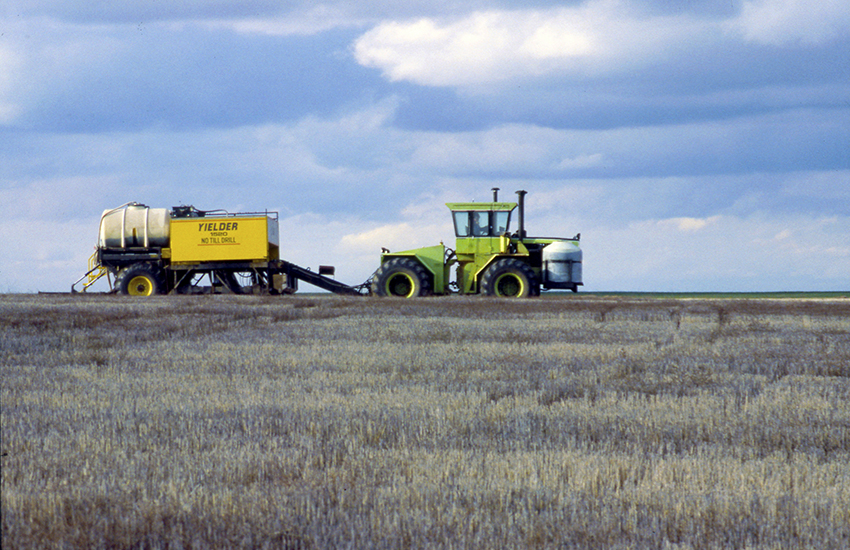
68.
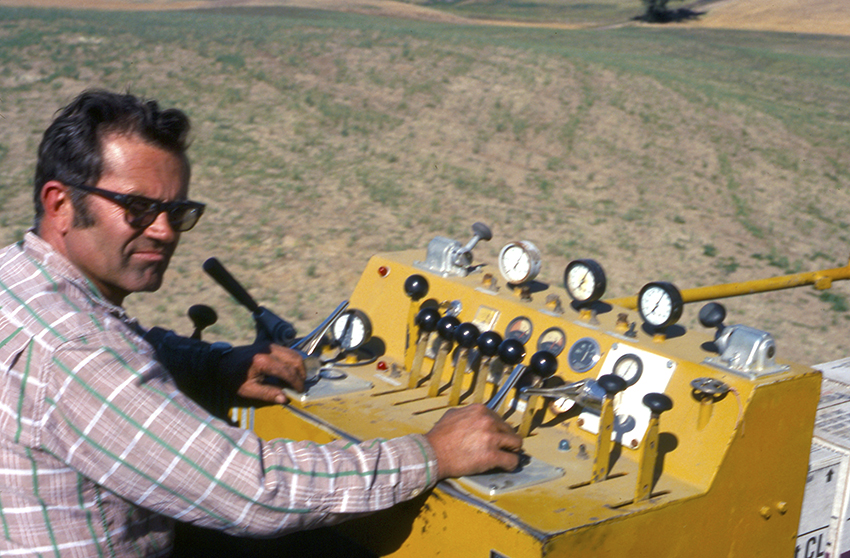
69.
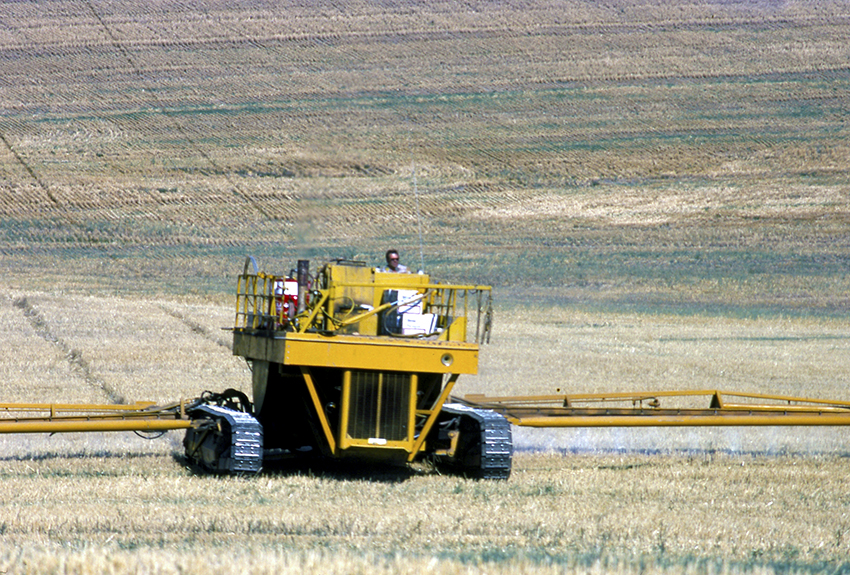
70.
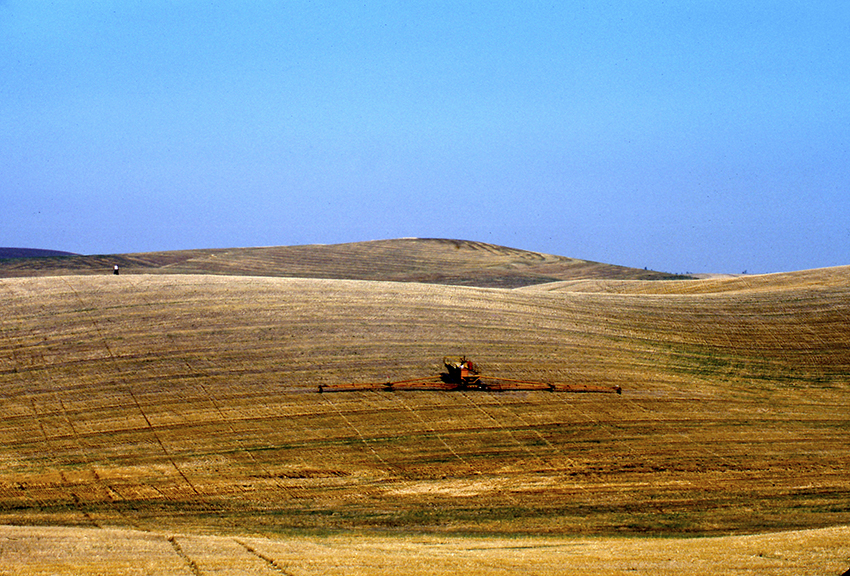
71.
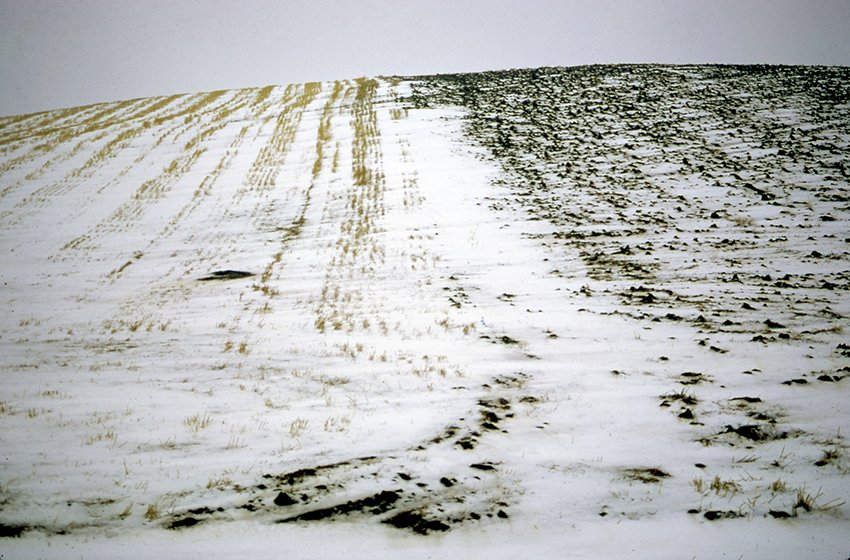
72.
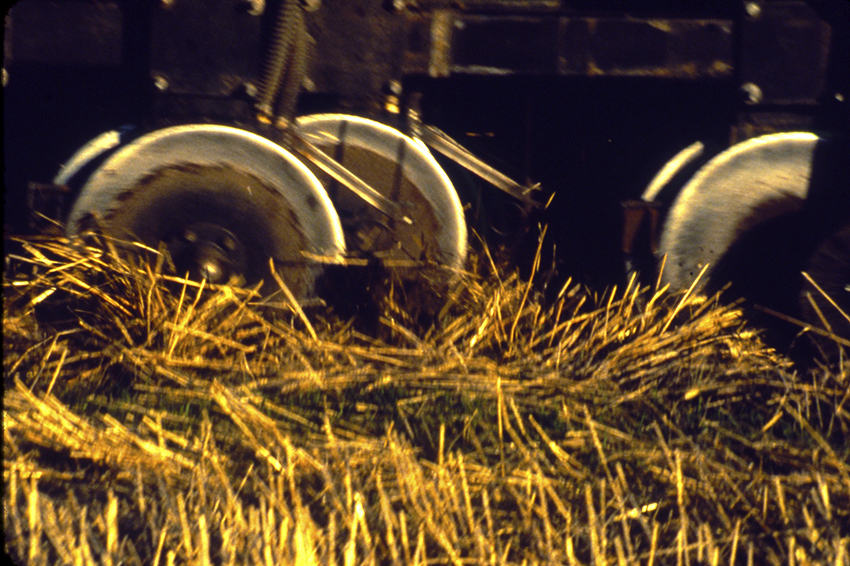
73.
|









































































